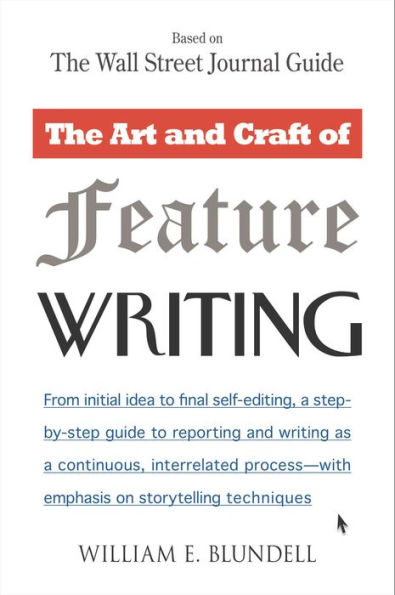| Introduction | ix |
| The disorganized, debilitated reporter | |
| Learning to function more efficiently | |
| The major commandment: Make it interesting | |
| Chapter 1 | Raw Materials | 1 |
| How and where to get ideas | |
| Picking the proper subject matter | |
| The need for files | |
| Finding and cultivating sources | |
| Thinking about story ideas: Extrapolation, synthesis | |
| Advancing story ideas: Localization, projection, viewpoint switching | |
| What readers like and don't like: Dogs, people, facts, observers, numbers | |
| Why the ideas with action in them are the best ideas | |
| Chapter 2 | Shaping Ideas | 23 |
| The importance of forethought | |
| Range of the story: Keeping it narrow | |
| Theme of the story: The importance of the main theme statement | |
| Developing the theme of a general profile or a microcosm profile | |
| Approach of the story: The limits of the profile and the roundup | |
| Tone of the story: Why it is important | |
| Chapter 3 | Story Dimensions | 43 |
| Time: The importance of the past and the future, as well as the present | |
| Scope: The quantity, locale, diversity and intensity of a development | |
| Variety: Using various source levels and internal proofs | |
| Movement: The built-in kind and the alternation of opposite elements | |
| The reporter's role: Neither lawyer nor scholastic nor objectivist nor formula follower. But what then? | |
| Chapter 4 | Planning and Execution | 69 |
| A six-part guide for the reporter | |
| I | History: Does the main theme development have roots in the past? | |
| II | Scope: How widespread, intense and various is the development? | |
| III | Reasons: Why is it happening now? | |
| IV | Impacts: Who or what is affected-and how? | |
| V | Countermoves: Who is acting to counter or enhance the development or its impacts-and how? | |
| VI | Futures: What could happen if the development proceeds unchecked? | |
| A slightly altered six-part guide for preparing profiles | |
| Another story element: Focus points and people. Descending to the lowest level of the action | |
| A reporter's sources: Wise Men, Paper Men and Rabbis | |
| Interviews and techniques in relation to storytelling | |
| How long should the reporting take? When to begin writing? | |
| Chapter 5 | Organization | 94 |
| Follow the laws of Progressive Reader Involvement: Tease me, you devil; tell me what you're up to; prove it; help me remember it | |
| A first reading of materials gathered for the story: Refining the main theme statement, looking for conclusions, looking for endings | |
| Indexing materials to help provide order | |
| Rules of organization in writing | |
| Keep related material together | |
| Let what you have already written suggest what comes next | |
| Try to isolate material from one source in one place | |
| Digress often, but don't digress for long | |
| Type of narrative lines: Block progression line; time line; theme line, and hybrids | |
| The lead paragraphs: Why they are often elusive. What to do when they are | |
| Chapter 6 | Handling Key Story Elements | 127 |
| Types of leads: Hard news, anecdotal, summary | |
| Standards for anecdotal leads: Simplicity, theme relevance, intrinsic interest, focus | |
| Why the general, or summary, lead is often better, difficult though it may be | |
| Numbers: How to handle them; when to avoid them | |
| People and quotes: Limiting the number of "talking heads" to emphasize the important actors in the story | |
| Reasons to quote people: To lend credibility, emotional response, trenchancy or variety | |
| Using anonymous quotes judiciously | |
| When paraphrasing is preferable | |
| Three roles for the reporter in the story: Summarizer, referee and observer | |
| Chapter 7 | Wordcraft | 158 |
| Being specific in words and phrases | |
| Being mean and tough with yourself and your turns of phrase | |
| Choosing what to describe | |
| How to describe well: Imagic exactness, the people principle, animation, poetic license | |
| Promoting a conversational quality | |
| The narrative flow and typical troubles with transitions, attributions and explanations | |
| How "purposeful structures" in writing can promote speed, force and rhythm | |
| Chapter 8 | Stretching Out | 188 |
| Some tips on handling lengthy stories: | |
| The importance of maintaining orderly development | |
| Alternating plot and character | |
| Maintaining suspense and setting up material to come | |
| Using typographical devices | |
| Chapter 9 | Notes on Self-Editing and Style | 218 |
| Editing yourself for content, for conclusiveness and flow for pace and precision | |
| The anguish of young writers, and how some overcome it | |
| Appendix 1 | Reading for Writers | 225 |
| Appendix 2 | Full Texts of Sample Stories | 230 |



